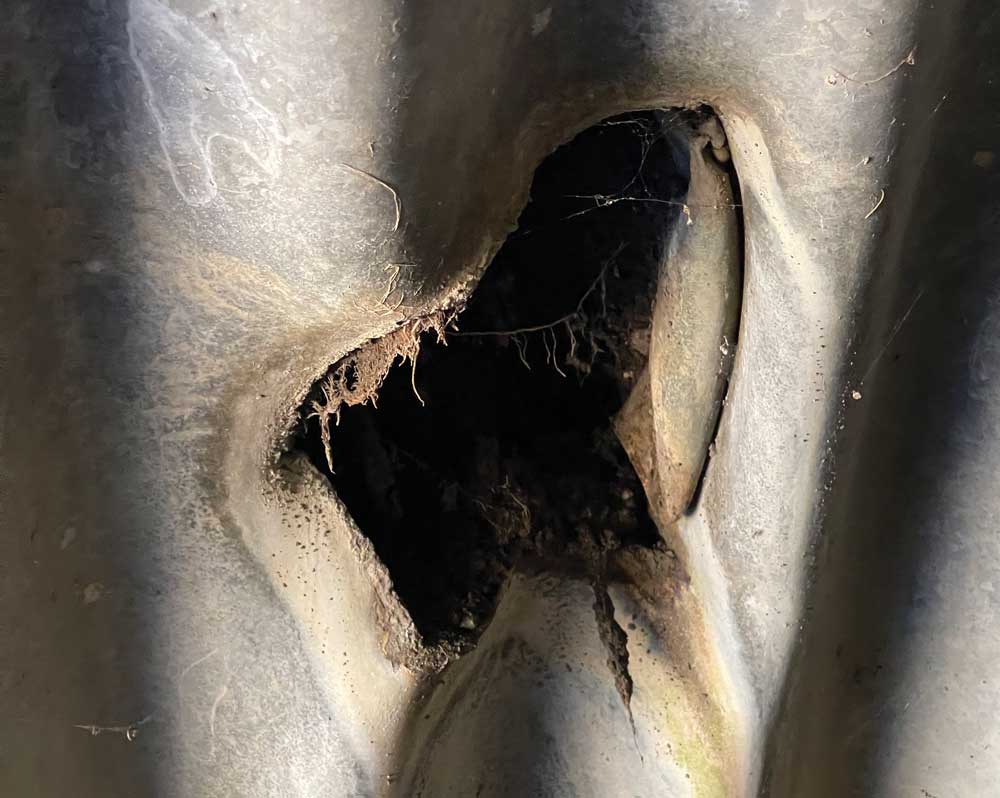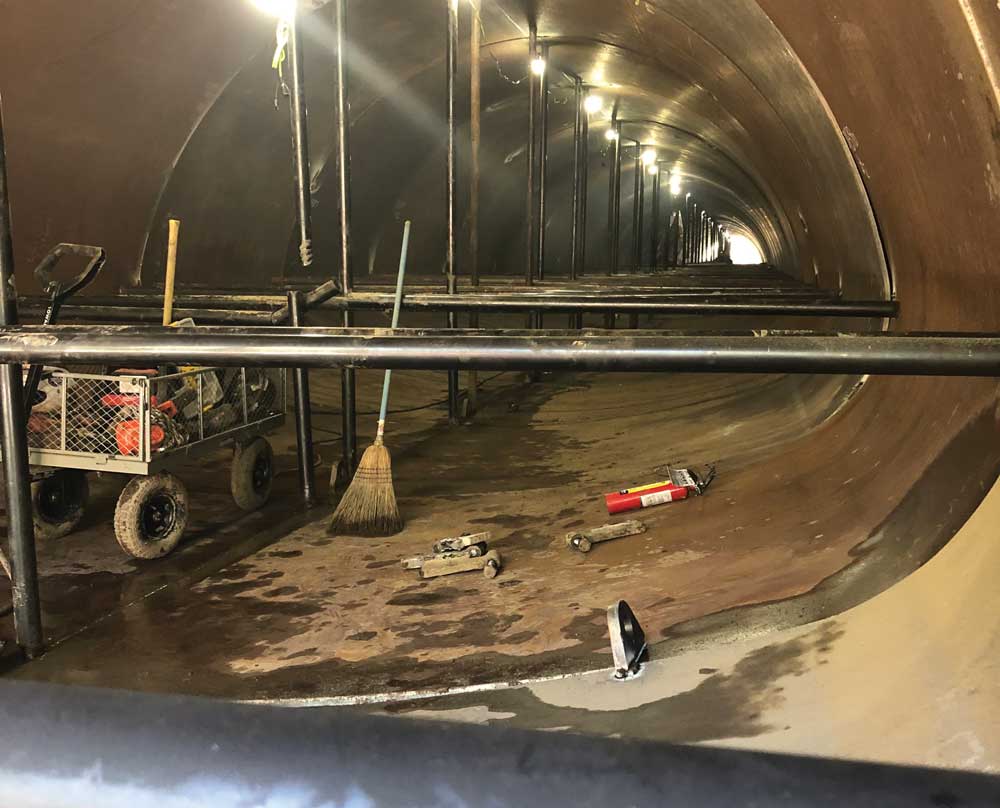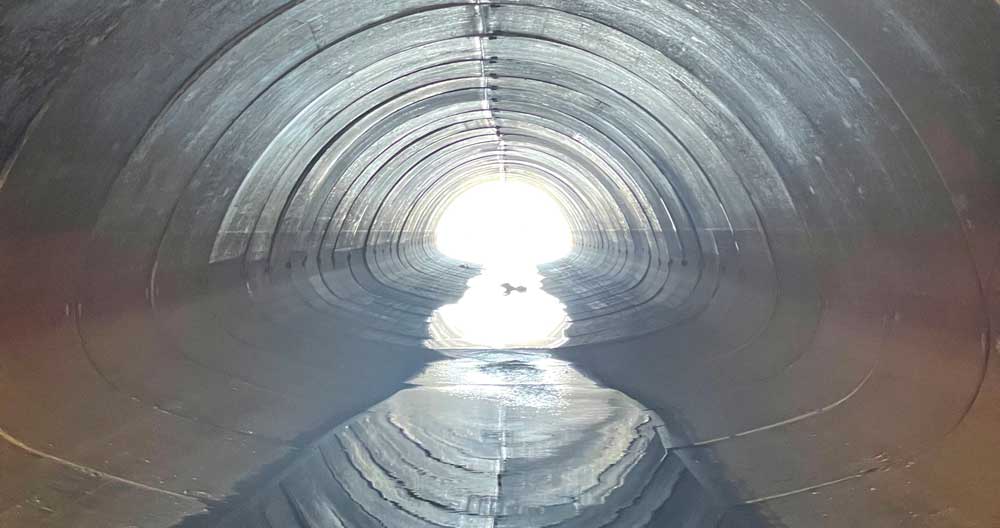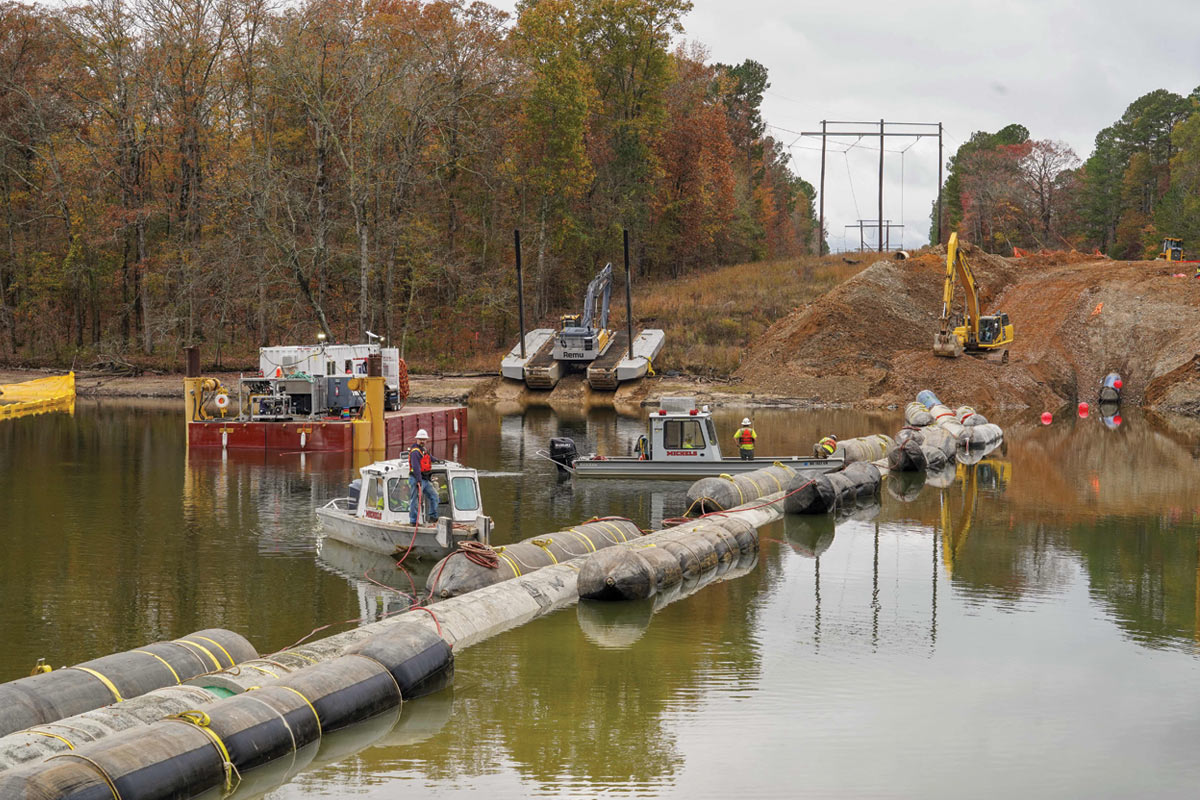
Large Culvert Rehab Utilizes Sliplining
Precision Pipe & Products spent a year working with Indiana Department of Transportation (InDOT) design engineers to provide a smooth wall carbon steel culvert slipline solution that would meet both the hydraulic and structural requirements for the rehabilitation of a large culvert under I-469 in the vicinity of Fort Wayne, Indiana.
Precision Pipe & Products Infrasteel liner was chosen as the preferred solution to be utilized and the project was put out for bid in spring 2021. Infrastructure Systems Inc. headquartered in Orleans, Indiana, was awarded the culvert rehabilitation contract.

The existing structure had 323-ft long main barrel that measured 196-in. x 126-in. and was originally constructed as a corrugated metal arch pipe. InDOT inspectors had noted multiple failure points throughout the structure as the result of swelling, barrel deflection, soil erosion, and deterioration of the CMP invert.
Infrastructure Systems is an established utility contractor with trenchless construction experience in directional drilling, jacking and boring, and culvert sliplining. Eric Kennedy with Precision Pipe & Products worked with Jon Stalker and David Salmon with Infrastructure Systems, to determine the radii of the existing structure, so that InfraSteel could fabricate a liner with the same radii and shape in order to maximize the hydraulic area of the rehabilitated structure. The critical components of the entire design ensured that it would meet standing InDOT hydraulic, material, and structural requirements.
RELATED: Sliplining in Atlanta: Rehabilitation of a Mid-Century Water Transmission Line

Following the InDOT approval of the drawings for proposed liner shape, Precision Pipe & Products fabricated a steel template that was passed through the existing culvert to confirm the liner dimensions were correct; this is customary with all Infrasteel projects to ensure a proper liner fit. Infrastructure Systems conducted an onsite walkthrough with the template which confirmed that a 188-n. Span x 116-in. Rise Arch Infrasteel liner would not only meet, but exceed all DOT project requirements.
With the InfraSteel liner design, approved and submitted for production, Infrastructure Systems began prepping the project site. The first phase of this process required the de-watering of the host structure. This critical step in the trenchless rehabilitation process is commonly completed by the construction of coffer dams and the utilization of by-pass pumping.

Infrastructure Systems used 6-in. pumps that allowed for an average pump rate of 1,000 gallons per minute. Following the dewatering cycle, Infrastructure Systems initiated the second phase of the jobsite preparation by installing steel rails to the bottom of the existing culvert. As their preferred method for guiding the InfraSteel liner into place, the railing system allowed for the liner to slide smoothly through the entirety of the structural barrel.
RELATED: Sliplining Considerations — from Curves to Coefficients
The liner required approximately eight weeks to be fabricated and delivered to the project site. The liner shipped in 8-ft sections with inverted bevels, the inverted bevels allowed for the joints to be welded from the inside of the liner sections. Infrastructure Systems used a 460 Linkbelt excavator to unload and position each liner section in the insertion pit, which was located on the downstream side of the structure.

After six days each piece was installed and then tack welded into position. Once this was completed, two welders were brought in to complete the full penetration field welds. With the welders working simultaneously, they were able to complete four joint welds per day.
Once the Infrasteel liner was fully welded, 220 yards of grout was pumped in the annular space, locking the liner in place and filling voids in the original structure. Following this final step, the interior liner bracing was removed, leaving an open barrel of smooth wall steel. With a Friction (Manning’s) Coefficient of .012, the smooth wall steel enhanced the hydraulic discharge rate of the structure when compared to the previous capability of CMP Arch. The entire project was completed in 35 days which also included site clean-up and landscape restoration.

Due to InDOT’s awareness and aggressive statewide culvert inspection program, the DOT was able to rehabilitate this degraded culvert with no impact to the traveling public, while also providing a solution that will serve the state for an additional 75 to 100 years. States and counties with active culvert inspection programs are less likely to experience a catastrophic failure or roadway collapse.
It is important for all infrastructure professionals to identify the common signs of an impending culvert failure. Many potential failures can be identified from the roadway surface by paying attention to the tell-tale signs of pavement cracking, eroding embankments, and dips or drops in the road and guardrails where there are creeks or streams.
Eric Kennedy is with Precision Pipe and Products.




